The traditional craft documented in Howard Chapelle’s books are well known, but a number of his drawings are tucked away in the Smithsonian Institution. Among the turn-of-the-century East Coast workboats in their files, catalogued as HIC303, is a handsome 18′ crabbing skiff. It has many of the characteristics associated with working skiffs used by Chesapeake Bay crabbers of the era: a shallow deadrise hull, a large skeg and centerboard, a transom-hung rudder, multiple thwarts, a foredeck with washboards down the sides, and a low coaming around the cockpit. The gripe is a skeg-like fin on the bow. It helps balance the skiff while under sail in thin water with the centerboard up.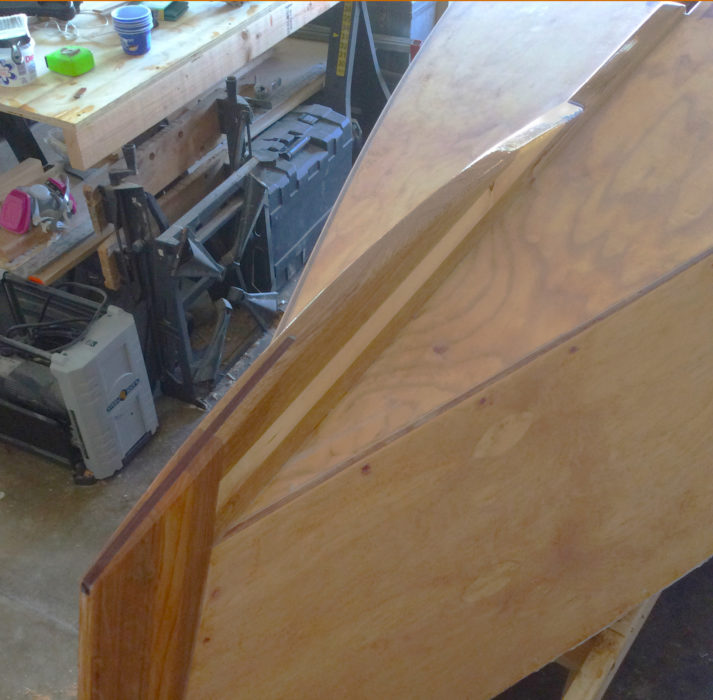 Christopher Walker
Christopher Walker
Join The Conversation
We welcome your comments about this article. If you’d like to include a photo or a video with your comment, please email the file or link.



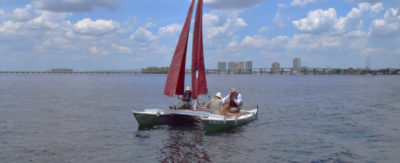
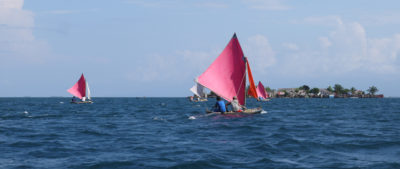
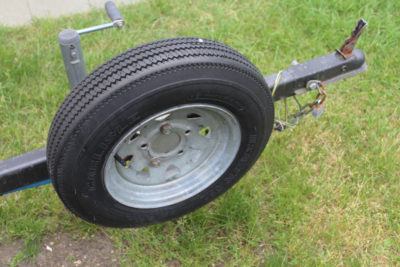
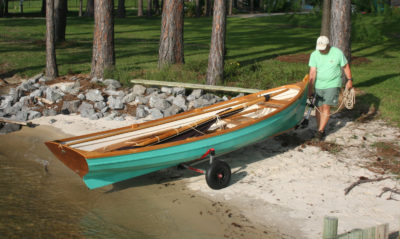
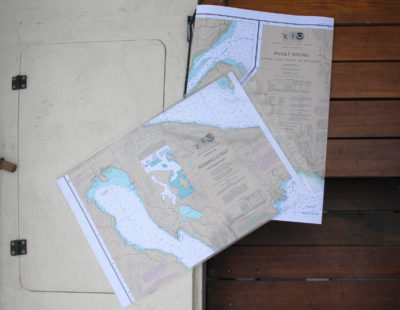
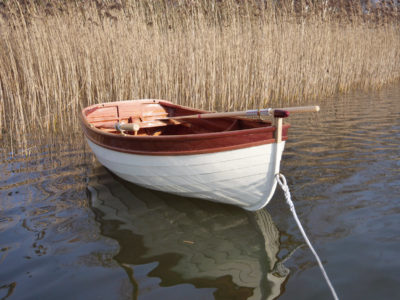
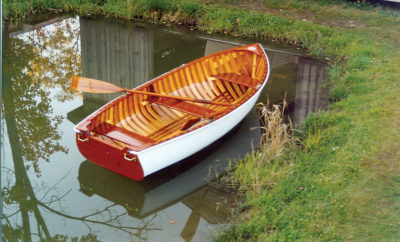
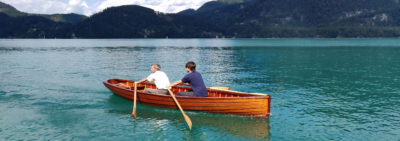
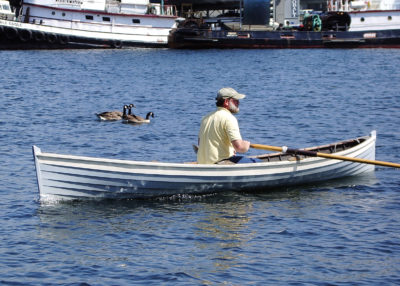
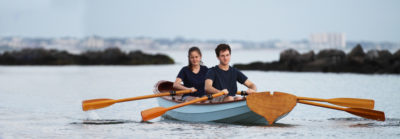
Great Job. I’ve used house paint also on a 18′ sharpie I built a few years ago. My reasons were a little different: #1 I’m cheap, #2 She’s a work boat design, nothing fancy, fancy paint and varnish just wouldn’t fit in, and #3 A ding here, a gouge there, just slap some more paint on. Keep sailing.
Chris,
I built the same boat in 1990 and have used it every season since. Mine is traditional build almost exactly as in the plans. I modified the deck and seating almost exactly as you did. Your description of the sailing qualities is exactly the way I would describe my boat. It is a wonderful boat in which I raised my kids. You did a beautiful and practical job. Unfortunately I am getting too old for so many boats and am looking for a good home for my 28-year-old skiff. It is tough because the traditional build requires keeping the boat in the water. Yours is the only other HIC303 that I know of.
Nice work and best of luck,
Tom
Tom,
This is way late as I didn’t know one could post comments on these. If you read this, thank you for the comments. I saw your boat on the internet and it’s what got me locked onto this design after having “settled” a couple times on other designs. Were I not moving around all the time, I might like to try to build another with lessons learned from this first one. It’s a great design and I’ve really enjoyed it. After 3 years of use with zero maintenance, it’s still just great. The only thing I want to do this fall is put another coat of paint on the sole inside where shoes, anchors, coolers, and such slide around on the bottom.
Chris
I now have Tom’s boat and it’s still amazing to sail. Was a bit scared the first time I put it in the water how much it leaked…but after three days of a good soak its tight as a drum. I have raced log canoes for the last 27 years and am blown away by how much this rig and sailing her is so similar. I guess when the old timers that designed them got something right they stuck with it, no mater the size.
Tom, if you are still around, thank you for building such a wonderful traditional Chesapeake bay boat. She’s sailed and enjoyed in her native waters now.
Ed,
Where on the Chesapeake do you sail Tom’s old boat?
Chris,
Is the boat anchored in the background of the picture with your beached crabbing skiff in the foreground a Pete Culler design? (perhaps the vee-bottom, double-ended, beachboat “JAVA” and “CRUZ del SUR”)
Eric,
Not sure of the designer but it is a flat bottom dory. The owner purchased her and sails up and down San Diego bay. She’s very much a work boat finish and handles the conditions on the bay really nicely.